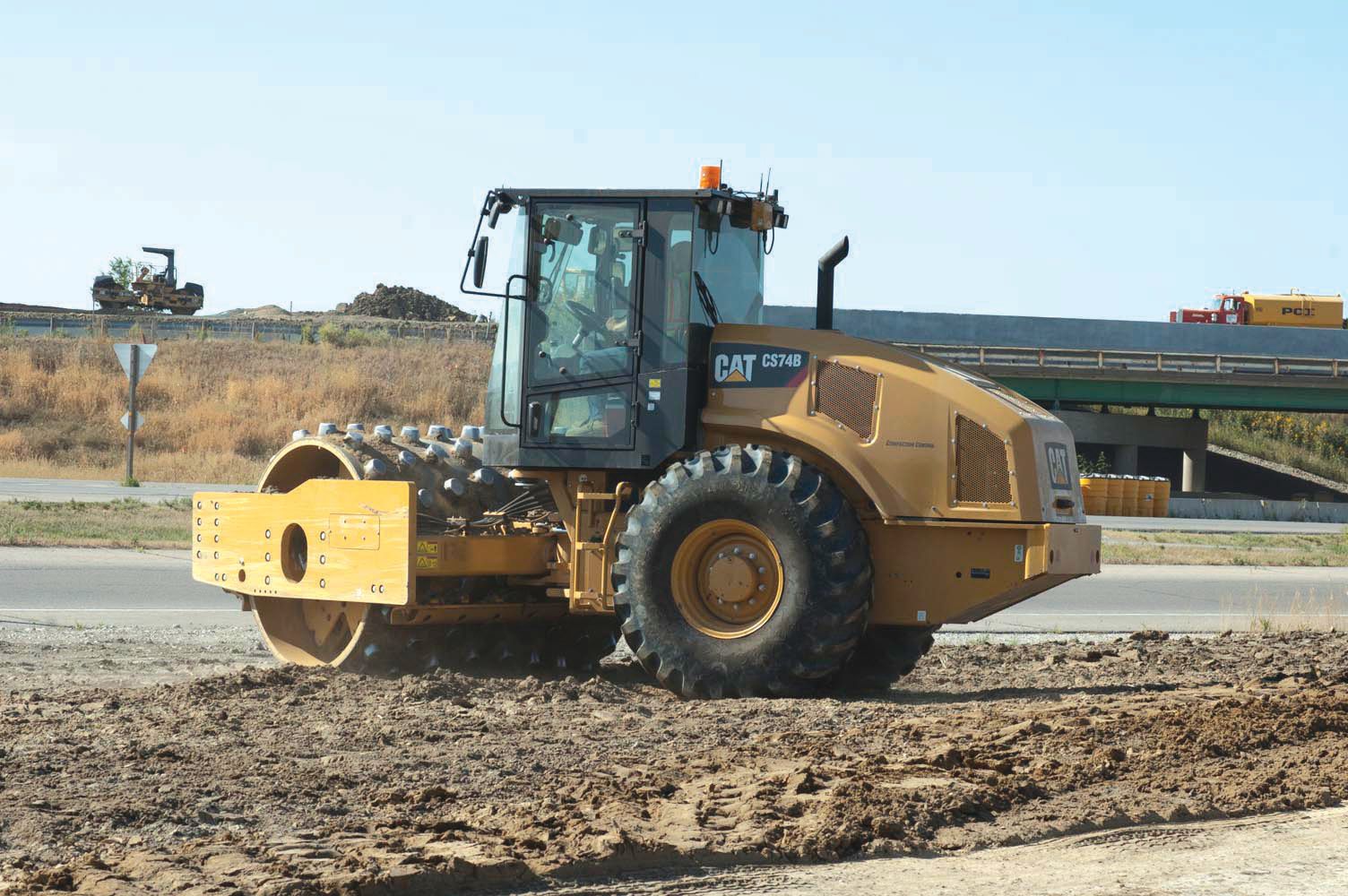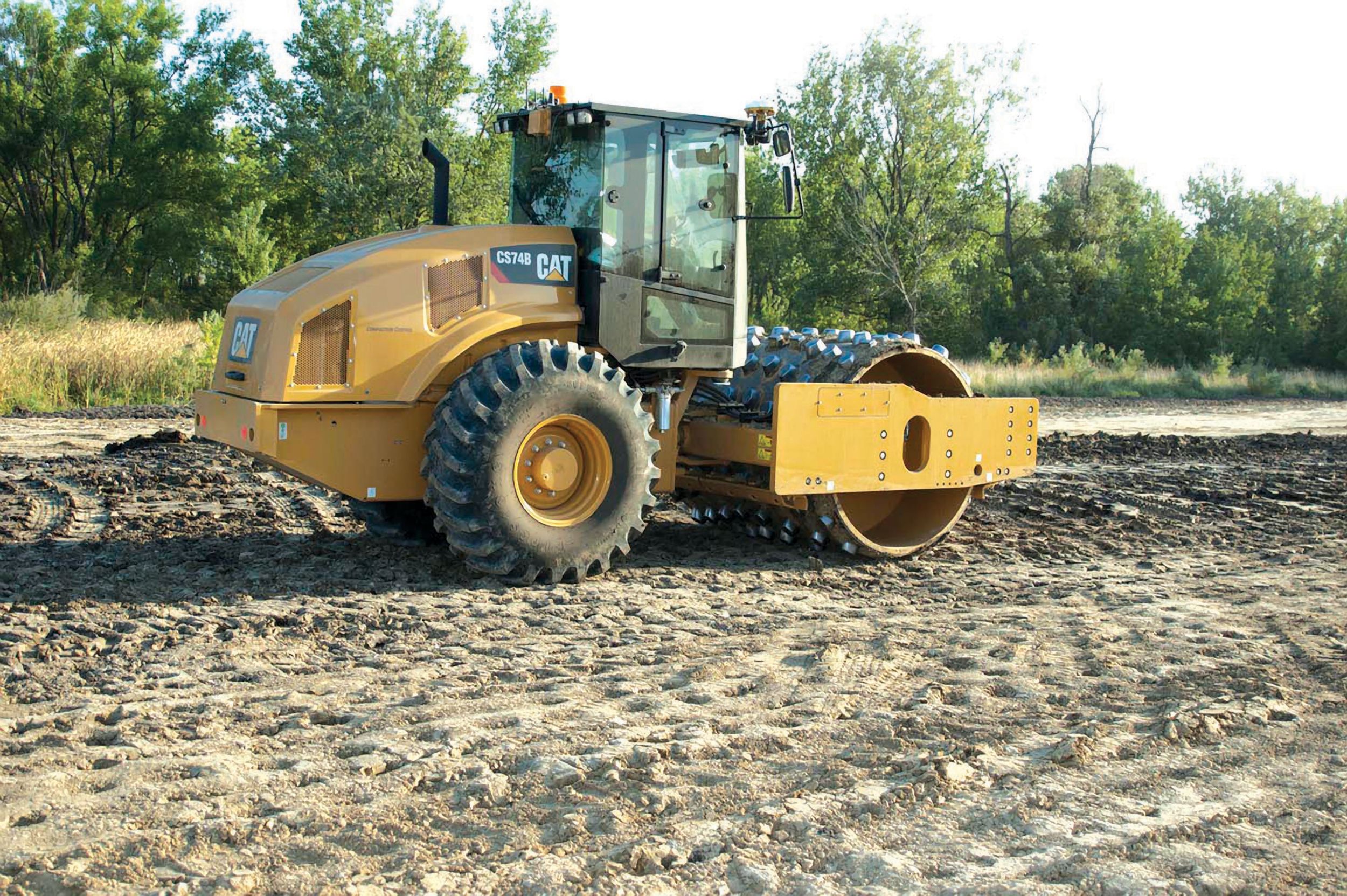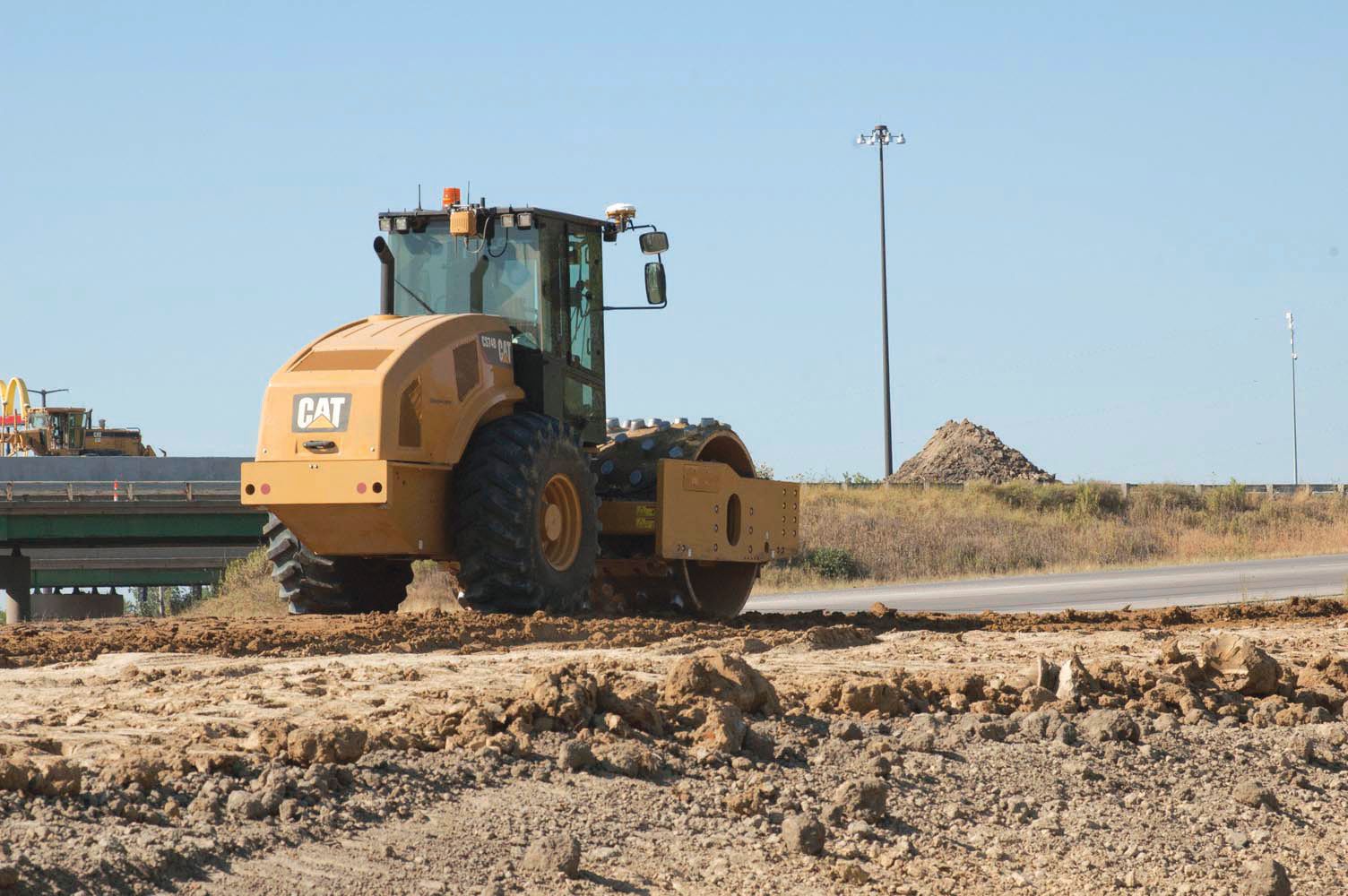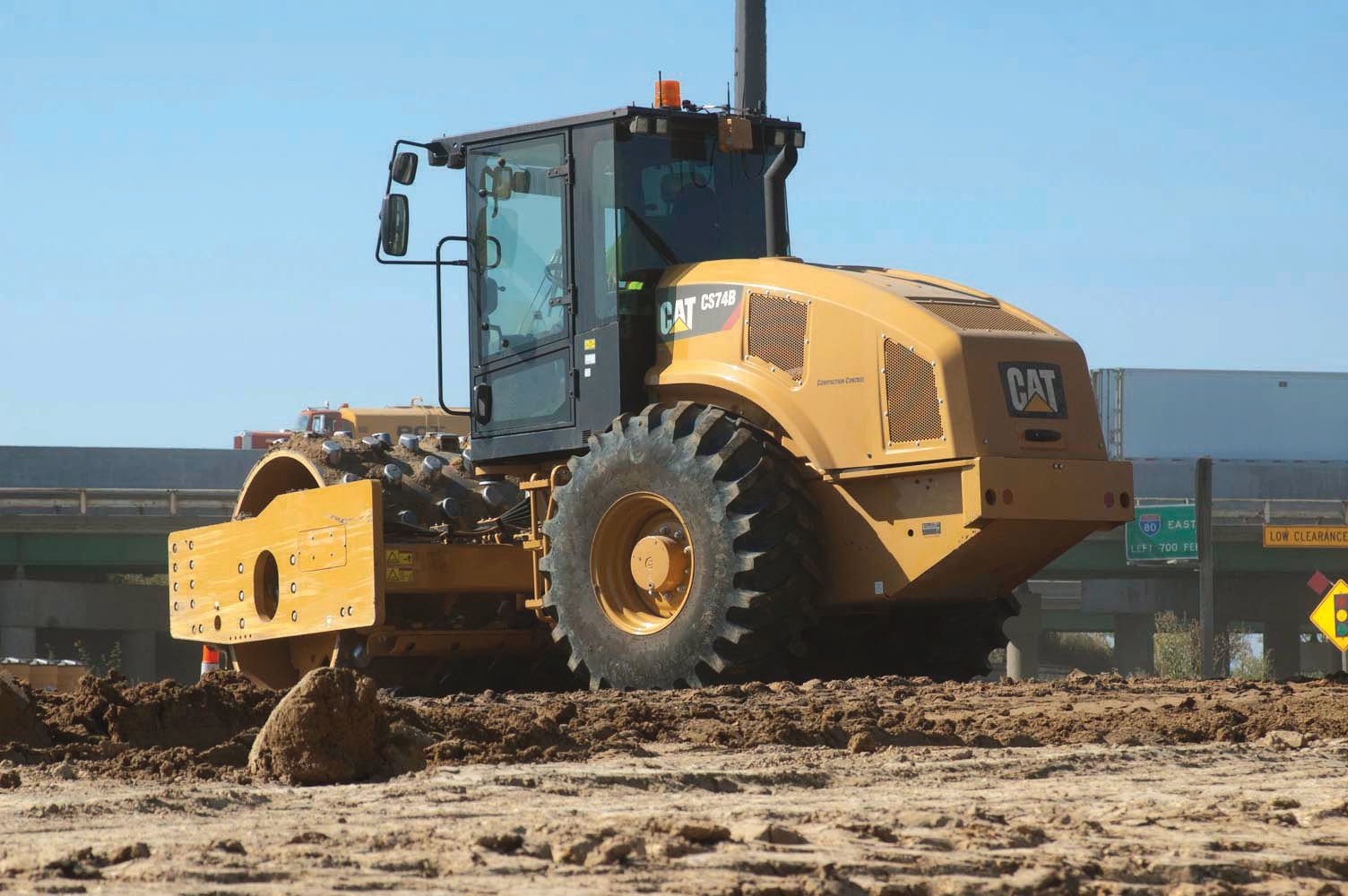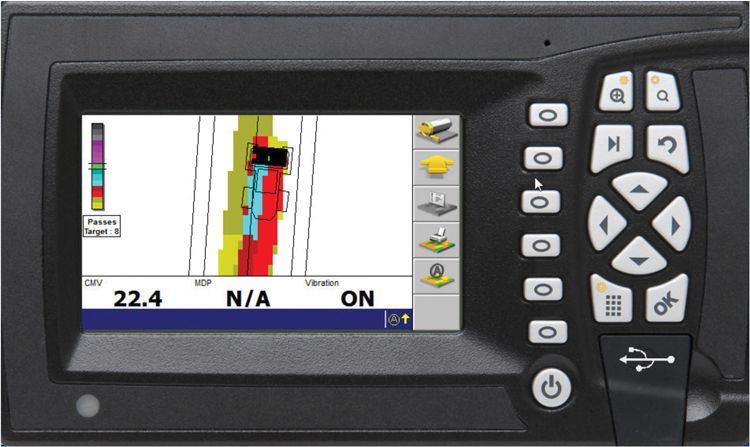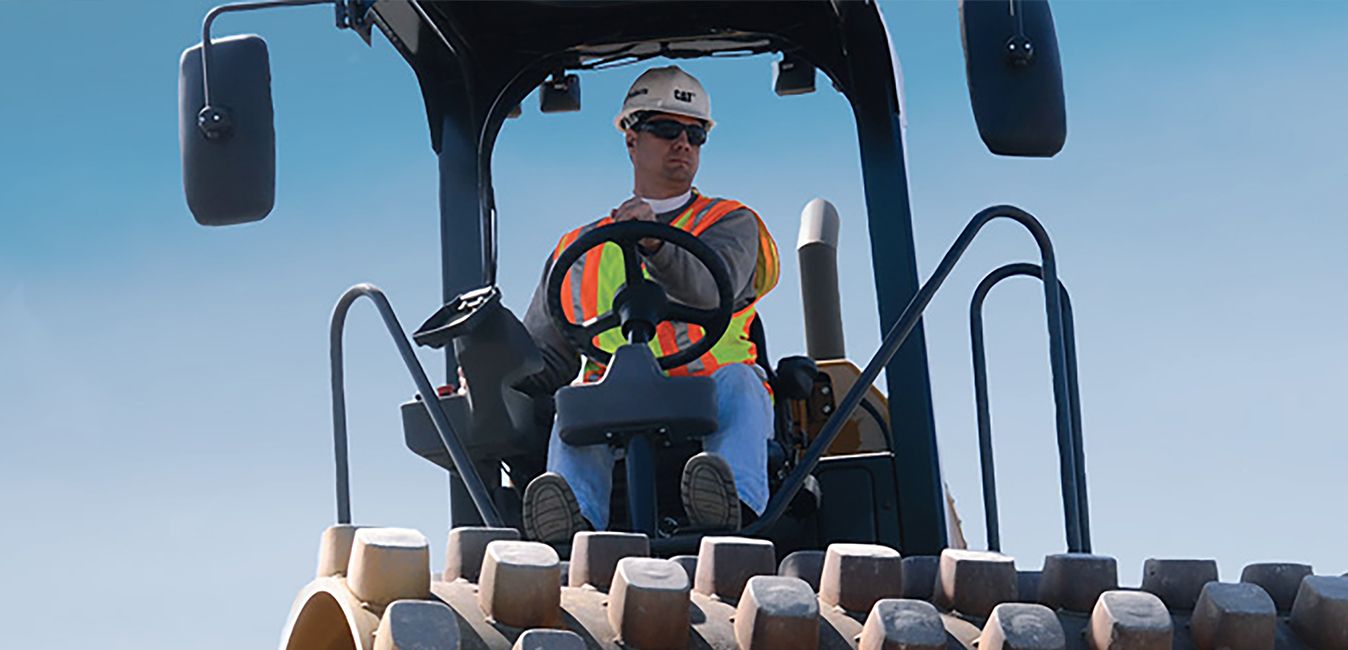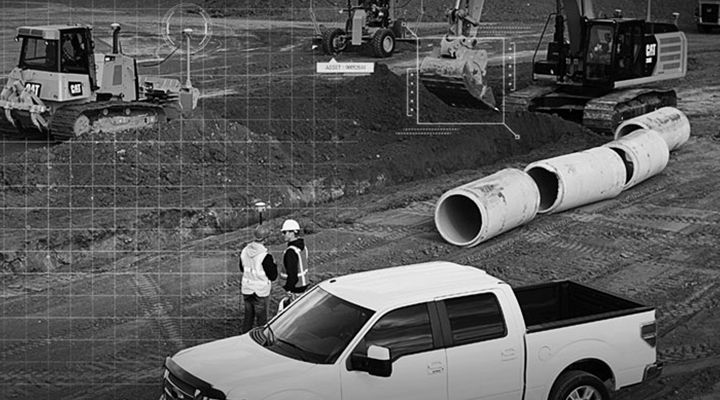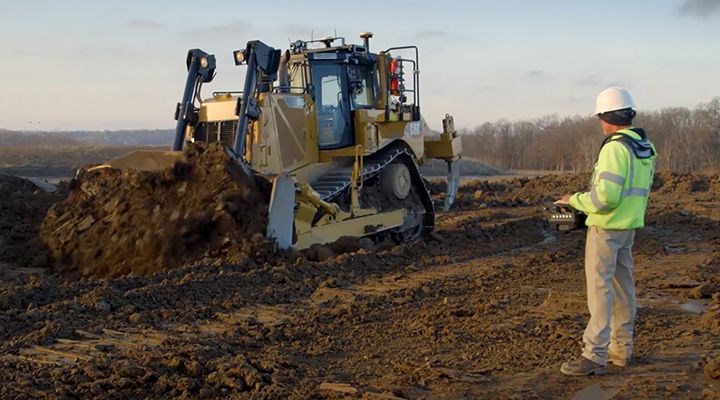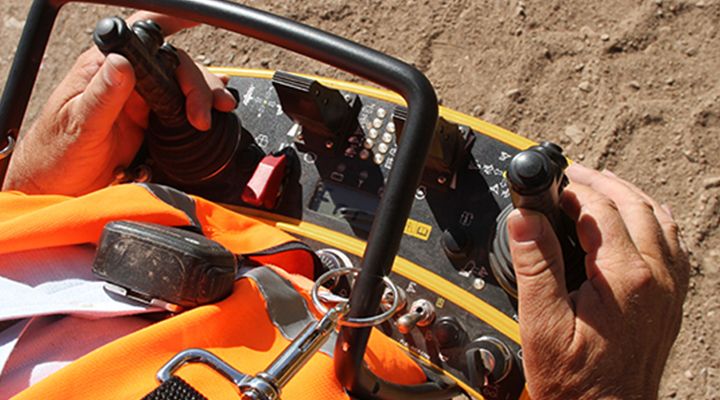

Sign In
Welcome! Sign In to personalize your Cat.com experience
If you already have an existing account with another Cat App, you can use the same account to sign in here
Register Now
One Account. All of Cat.
Your Caterpillar account is the single account you use to log in to select services and applications we offer. Shop for parts and machines online, manage your fleet, go mobile, and more.
Account Information
Site Settings
Security
The Construction World's Next 'Game Changer'
Don Taylor has seen some construction breakthroughs in his day.
“The first was the change from cable to hydraulics,” says Taylor, project manager at McAninch Corp., an Iowa highway, heavy and utility construction firm. “Next was GPS,” and the stakeless sites that came with it.
Taylor might soon add a third breakthrough to his list: MDP, or Machine Drive Power.
“It’s a game changer,” he says.
MDP Defined
MDP is a machine-integrated soil compaction measurement technology. Contractors at several jobsites around the world, including Greece, Germany and an interstate on-off ramp being built by McAninch in Altoona, Iowa, are testing it.
MDP is one element of Intelligent Compaction (IC), which is gaining prevalence on jobsites daily. IC is commonly understood to include:
- An integrated compaction measurement system (an accelerometer, or in this case MDP).
- A system with the ability to tie jobsite positioning location with a GPS.
- A way to record and take gathered data for analysis.
MDP is a not a breakthrough in how machines compact. Instead, MDP evaluates the rolling resistance.
“It gives an indication of soil stiffness by measuring the rolling resistance on the drum,” says Loïc Le Bellec, Regional Sales Support Consultant for Caterpillar’s Paving Products group. “It correlates the fact that the looser the material is, the harder it is for the drum to roll over the pile of material in front it.”











That resistance provides an indication of soil stiffness and load-bearing strength, and whether compaction is adequate to hold the road, parking lot, building—or whatever is planned for the site.
MDP, a proprietary technology developed by Caterpillar, is catching the attention of contractors worldwide for several reasons. It works on all soil types, including cohesives. It can enable a compactor to act as a proof roller, even when not vibrating. Machine Drive Power can eliminate multiple passes of a compactor, and therefore deliver considerable cost savings.
But the ultimate benefit—to contractors, quality control lovers and taxpayers—might be summed up in one word: uniformity.
Uniformity
Uniformity has always been an issue. Is the entire site compacted the same way, or are there areas of structural weakness?
Uniformity matters because weak areas ultimately become failures. That means going back and making costly repairs.
Historic methods of testing can only provide a snapshot and are no guarantee of uniformity. Typically only 1 percent of the jobsite is tested.
That has left compaction experts to search for uniformity by other means. Among those experts is Dr. David White, a civil engineering professor at Iowa State University in the U.S.
“IT GIVES YOU CONFIDENCE THAT YOU’VE REACHED DENSITY AND CAN MOVE ON.”
White has spent years studying soil compaction, and months gathering data at the Altoona jobsite. Among his most important findings: MDP is an outstanding indicator of soil stiffness, load-bearing strength or the ability for the compacted soil to resist deflection on a consistent basis, across the entire jobsite.
In other words, it makes uniformity achievable.
The only way to truly achieve the desired uniformity is through IC. Why?
Uniformity requires a map—operators need to know where they’ve been. The GPS mapping element of IC covers that.
Uniformity requires measurement of the entire site. That is accomplished through machine-integrated technology delivered through the MDP component of IC. (The compactor measures while it works over the entire site.)
The Altoona Experience
The on-off ramp in Altoona proved a great testing ground for IC and MDP. Specifically, the site demonstrated the ease of preventive measures, compared with costly post-construction repairs.
Operator Eddy Butler went to work on the ramp, viewing real-time results on an easy-to-use monitor display on the Cat® CS74B Soil Compactor, outfitted with Cat Compaction Control, an IC technology, including MDP.
A green area on the display meant the area had been covered and the targets had been met. A red area indicated what White refers to as a “troublespot.”
Butler had quickly seen green most of the day—and the previous days, too. But when he made two passes over an area and still saw red, he knew an adjustment had to be made.
The first victory was the fact Butler knew there was a problem. He worked in a soil with heavy clay content, and an accelerometer-based instrument would have had difficulty finding the trouble.
Butler realized the red probably resulted from too much moisture. He switched from the compactor to a tractor and disk and spent about 15 minutes turning the soil so it would dry more quickly.
Then it was time to take another pass with the CS74B. The screen turned green, and Troxler density samples later confirmed the target had been achieved. “We’ve not been wrong yet about whether we would pass a test,” Butler says.
Not making the adjustment would have proven costly. That section of road might not have passed a test, or worse, would have gone unnoticed and failed prematurely. In other words, the site would not have been uniform and the discovery likely not made until the asphalt started cracking.
A Game Changer and Cost Saver
The fact that Butler was only inconvenienced for a few minutes, compared with having to prematurely rebuild the ramp, shows why IC and MDP are the “game changer” Taylor referred to.
“It gives you confidence that you’ve reached density and can move on,” Taylor says. He and others testing the technology say it is a more accurate indicator of stiffness and load-bearing strength than anything they have seen to date, perhaps in part because of the high clay content of the Iowa soil—though it works well in other materials, too.
“You can add a lot of road life with (road base) uniformity,” Taylor says. “If the base has no weaknesses, you’ll only have to replace a wear course from time to time.”
Successful in Europe Too
The testing has gone beyond the U.S., with several demonstrations being completed in Germany, France, Sweden and Netherlands.
“YOU CAN’T LEAVE TECHNOLOGY LIKE THIS ON THE SHELF. YOU WOULD HAVE BETTER MEASUREMENTS, AND BETTER ROADS, AT A LOWER COST. THOSE ARE TOUGH POINTS TO ARGUE.”
“All feedback from customers about Cat Compaction Control in general and the MDP system in particular have been very positive,” says Le Bellec. “We are confident that this is the right technology for our customers and that it will help them get more productivity and more efficiency out of their soil compactors.”
Changes in Specs?
There are gains beyond uniformity, and productivity is among them. “With this system (MDP), we were able to reduce the number of passes from eight to two or three,” says Jesse Boston, project foreman for McAninch.
Reducing passes impacts fuel consumption, machine wear and labor costs. In Altoona, it also helped make up for time lost to heavy rains.
How could the number of passes be reduced so dramatically? Soil compaction method specs typically require a pass for each inch of material, up to 8 inches. Therefore many jobsites routinely require eight passes (with a movement in one direction considered a single pass).
The belief is that the method specs—in this example the requirement of eight passes—are the best way to ensure the foundation can later bear the load. Without a good measurement technology, method specs were the best approach.
Now that IC and its MDP component are available, the method specs and the passes they require are getting another look.
“Most of those passes are a waste,” Taylor says. “Many times on jobsites, we could probably get compaction densities with haul trucks. We might not even need rollers. But the specs call for eight passes, so we make them.”
Many contractors would welcome a change in specs. Some advocate “performance specs,” where a compaction goal is assigned to each layer of material. Finding a way to meet that goal would then fall on the contractor.
Taylor understands method specs were utilized because they were the best available option, but believes that will no longer be the case with IC and MDP technology.
IC and MDP measurements are being considered in some other corners, with state and federal transportation officials taking closer looks. Changing minds and methods can be a difficult process, yet Taylor believes MDP to be so beneficial that adjustments will have to be made.
“You can’t leave technology like this on the shelf,” he says. “You would have better measurements, and better roads, at a lower cost. Those are tough points to argue.”
RELATED ARTICLES
You’re here to get ideas to grow your business. Read on for machine insights and expert tips and tricks to get more out of every job.
-
Productivity - More Efficiency. Better Results.
Cat® Technologies gives you the accuracy, consistency and productivity you want.
Learn More -
Paving Production Calculator App
This calculator can help optimize the jobsite, reducing inefficiency and contributing to smoothness.
Learn More -
Automation & Autonomy: What's the Difference?
These words get used interchangeably, creating confusion. To improve consistency, we've defined these terms.
Learn More -
Machine Control & Automation Can Add To Your Bottom Line
Technologies that enhance machine performance can add to the bottom line.
Learn More

